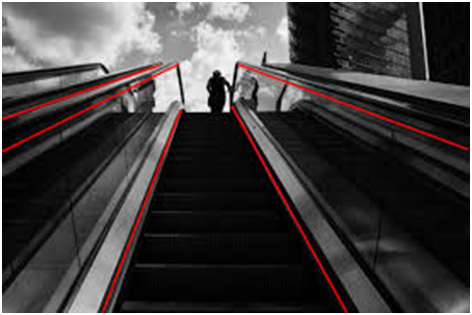COMPOSITION IN PHOTOGRAPHY
- Xposure dsc
- Mar 9, 2022
- 3 min read
By Garima Dhapola

The arrangement of the elements in a frame is composition where frame simply refers to the picture frame dimension.
WHY DO WE NEED COMPOSITION:
Composition is a way of guiding the viewer’s eye. It gives a meaning to your photo, viewers get a better feel and interpretation about the photo.
TYPES OF COMPOSITION:
SHAPE BASED: These contain easily identifiable shapes like alphabets, triangle, circle, rectangle etc. As we see shapes almost everyday, they are easily identifiable by our eyes, that’s why their representation in pictures make it more satisfactory and amicable.
A picture with curves basically represents cooperativeness, modesty, humility, expressiveness, empathy, affection, tenderness.
And a picture with straight lines represent strength, power, authority and competitiveness.


GEOMETRY BASED: This composition is a combination of both basic and complex geometry which increases the communication between viewers and the photograph. They work on triggering your brain to see and think in a specific way. It contains, rule of third, frame in frame, leading lines, golden spiral, harmonious/golden triangles, golden section, golden spiral, the diagonal.
RULE OF THIRD:
Dividing the frame in 9 equal areas with two horizontal and two vertical lines.
Some of the important points are -
1. place the subject in 4 points of intersection.
2. place the eye of the speaker on the first horizontal line while he speaks.




FIBONACCI’S COMPOSITION: The Fibonacci Spiral was created from a series of squares using Fibonacci’s numbers, with the length of each square being a Fibonacci number. A series of diagonal points on each square will then create a path for which the spiral can flow through the frame.




DIAGONALS: Diagonals move the viewer’s eye through the frame from one end to the diagonal of the other creating visual flow. So if a diagonal begins at the edge of a composition, it draws the viewer in, and then takes them on a journey all the way to the other.



HARMONIOUS AND GOLDEN TRIANGLES:
This contains one diagonal and two perpendicular from the remaining corners of the frame on the diagonal makes Harmonious Triangle.


One diagonal on the frame and two lines. Starting from the remaining corners to 1/3rd part of the opposite edge makes Golden Triangles.



LEADING LINES: these are the lines in a photograph which have been positioned or framed in a manner to draw the attention of the viewer towards a specific point of interest.




FRAME IN FRAME: In this kind of composition an element of a scene is used as a frame within your frame. Addition of framing through framing shows an exact place to look at and the idea of the environment of the photo.



SYMMETRY: In a symmetric composition the two halves of the image are mirror images of each other. Symmetries are pleasing to human eyes so it draws more attention of the viewers toward the picture.


PATTERNS: The human brain is more attracted towards the patter, so it's also a way to draw the attention of the viewer towards any photograph.


BREAKING THE PATTERN: A break in between a continuous pattern breaks the rhythm, which could be any element which adds context or scale, or which creates contrast with the pattern’s color, shape or complexity.



THE DOMINANT EYE: In portrait photography , the first priority should be the eye focus of the subject. The rule of the dominant eye says that the dominant eye of the subject should be in the dead center.


RULE OF ODDS: According to this rule, if the number of objects and subjects in a picture are odd in place of even, it draws more attention in comparison and it often looks more attractive, pleasing.


BALANCING AND SPACE: Balance is a compositional technique in photography that involves arranging the main subject and other elements within the frame of a photograph so that everything in the image has equal visual weight.
The rule of space is simply the act of adding visual space in the front direction that an object is moving, looking or pointing to imply motion and direction and to lead the eye of the viewer.




By using all these rules, one can click beautiful photographs. Moreover, you can break these rules after mastering them and then creating some new rules. As said by PABLO PICASSO -
“Learn the rules like a pro, so you can break them like an artist”





Comments